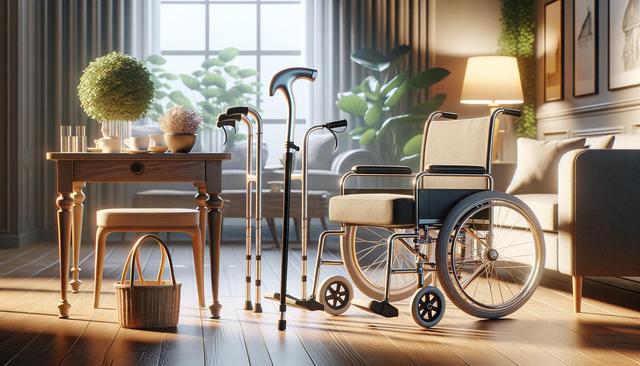Modern Mobility Aids: Where Function Meets Fashion
Today’s mobility aids are far more than just practical tools—they’re thoughtfully designed products that blend form and function. From sleek finishes to ergonomic structures, these devices provide both the support seniors need and the confidence they deserve. Walkers, canes, rollators, and scooters now come in a variety of colors, materials, and structural designs to match an individual’s personal taste and lifestyle. This evolution in design acknowledges that seniors value dignity and independence, and want tools that reflect their personality rather than medical devices that feel clinical.
For instance, rollators are available with stylish frames in metallic tones or matte finishes, and often include accessories such as coordinated storage bags or cushioned seats. Canes can be found with decorative handles, wood or carbon fiber shafts, and even foldable features for convenience. These upgrades not only enhance mobility but also help reduce the stigma often associated with assistive products.
Choosing the Right Mobility Aid
Selecting a mobility aid goes beyond aesthetics. It’s important to choose a product that matches the user’s physical requirements, daily routines, and environment. A poorly suited mobility aid can hinder rather than help. Key considerations include:
- Strength and support needs – lightweight canes may suit those needing minimal support, while rollators are better for those requiring more stability.
- Terrain – indoor use may require smaller wheels, while outdoor or uneven surfaces benefit from larger, all-terrain wheels.
- Portability – foldable designs are ideal for travel or storage in small spaces.
- Height and weight capacity – adjustable heights ensure ergonomic use, and weight limits must be respected for safety and durability.
Consulting a physical therapist or mobility specialist can provide personalized guidance. Many providers now offer evaluation services to recommend aids that match physical needs while also considering style preferences.
Stylish Accessories that Enhance Comfort and Use
Mobility aids can be further enhanced with thoughtfully designed accessories. These additions not only increase functionality but also contribute to a more enjoyable and personalized experience. Examples include:
- Designer storage pouches or baskets that attach to walkers or scooters.
- Cushioned grip handles and wrist straps for canes.
- Weather-resistant covers and seat cushions for scooters and rollators.
- LED lights or reflective decals for improved visibility and safety during evening strolls.
These stylish upgrades allow users to tailor their mobility aid to reflect their tastes and lifestyles. For many seniors, these enhancements transform mobility aids into everyday companions that feel like an extension of themselves rather than a reminder of limitations.
Confidence Through Personalization and Attitude
Confidence plays a huge role in how mobility aids are perceived and used. When a senior feels good about how they look and function with their aid, they’re more likely to use it consistently and effectively. Personalizing a mobility aid—whether through color, accessories, or features—can serve as a form of self-expression and empowerment.
Moreover, embracing a positive attitude towards assistive devices can shift the narrative from dependence to independence. Mobility aids are not signs of decline but tools that support an active, engaged lifestyle. Whether it’s enjoying a walk in the park, attending social events, or traveling, the right aid can enable rather than restrict.
Encouraging seniors to view mobility aids as empowering tools rather than burdens can lead to improved mental and emotional well-being. Family members and caregivers also play a crucial role by reinforcing this mindset and supporting the selection of aids that feel right both functionally and stylistically.
Where to Find Stylish Mobility Aids
The growing demand for stylish mobility aids means there are now more options available both online and in physical stores. Specialty mobility retailers often offer curated selections that focus on both comfort and aesthetics. In addition, some general health and lifestyle stores have expanded their inventory to include fashionable mobility products.
When shopping, it’s helpful to look for:
- Products with high customer ratings and detailed reviews.
- Retailers that offer customization or color options.
- Companies that prioritize ergonomic design and safety testing.
- Options to test or return products if they don’t meet comfort or style preferences.
It’s also worthwhile to explore local support groups or community centers, as they often share resources or partner with vendors for discounts. With the right guidance and a bit of research, finding a mobility aid that merges function and fashion is entirely possible.
Conclusion: Embracing Movement with Style and Grace
Mobility aids today are more than just tools for getting around—they’re expressions of individuality and independence. For seniors seeking to maintain an active lifestyle, stylish and functional aids can make all the difference. By choosing equipment that fits both their physical needs and personal style, seniors can move through the world with confidence, comfort, and pride. Supporting this approach not only enhances day-to-day living but also promotes a more inclusive and empowering view of aging.






